Kevin M. Schultz, in his insightful social history of religion in modern America, notes that “a final factor changing America’s religious sociology, one that has yet to supplant the liberal-conservative divide, has been an increase in the number of faiths practiced in the United States. Changes in immigration law since 1965 have allowed a variety of new immigrant populations to come to the United States, especially from Asia, Africa and Latin America” (Tri-Faith America, 202). Each of these new immigrants brings with them their own religious traditions. These include Buddhism, Hinduism, Islam and many, many more. These simple facts make it increasingly difficult to talk about a “Judeo-Christian” America. President Obama, in a April 2009 statement at a press conference in Turkey said that the United States did not consider itself “a Christian nation or a Jewish nation or a Muslim nation. We consider ourselves a nation of citizens bound by ideals and a set of values” (cited in Tri-Faith America, 202).
Now it seems quite obvious to me that the president is right. Only religious conservatives, and those of a certain ideology for that matter, can still speak of a “Judeo-Christian” America. The truth is clear—it does not exist! It did exist, at least as a Protestant America, and then as an America of liberals and conservatives who defined the country by their version of faith. But it does not exist any longer.
As this “tri-faith” religious context evolved it is not surprising, adds Schultz, that many Catholics and Jews felt less compelled to retain their religious identities, Adds Schultz, “Success and acceptance had bred indifference” (Tri-Faith America, 203). To give but one example, Fr. Andrew Greeley’s sociological studies have shown that Catholics have used the post-war years to achieve economic, educational and social parity with white Protestants. By the 1960s Catholics were more likely to go to college than white Protestants. This was a huge social shift. The sense of prejudice that existed between Catholics and Protestants was almost gone by the last few decades of the twentieth century. Who cannot genuinely celebrate this social and religious change?
Jews were succeeding as well. By the early 1960s Jews could hold most prominent positions in society and education that had previously been closed to them. The number of political leaders who were Jewish increased dramatically and major corporate leaders in America were Jewish by the 1970s and beyond. Today it makes little or no difference if you are a Jew in most parts of American society.
But both Jews and Catholics now face their own “identity crisis.” This is often discussed within their own communities. I have discussed this with Catholic bishops and priest as well as Jewish rabbis. Take Catholics as one example. Prior to the modern era part of Catholic identity was nourished by a certain antipathy towards Protestants and Protestantism. This prompts Catholic writers to wonder if Catholicism in America has “sufficient inner resources to survive and flourish” (Daniel Callahan, cited by Schultz, 206) despite the positive changes in culture. The jury is out on this question as Catholics, just like Protestants, are losing members faster than they can retain them. Another Catholic writer, Francis Canavan, questioned Callahan by saying this new situation had given Catholics a “new pluralism” that was decidedly opposed to their faith and church (quoted by Schultz, 207). What is the future of Catholic identity in a pluralist (and secularized) American context?
Honestly, this last question (about Catholic identity in a pluralist and secularized context) should be asked of all Christians and Jews in America?
Tomorrow: How Shall We Deal with Our Identity Crisis?
Related Posts
Comments
My Latest Book!

Use Promo code UNITY for 40% discount!




